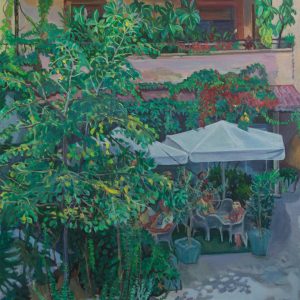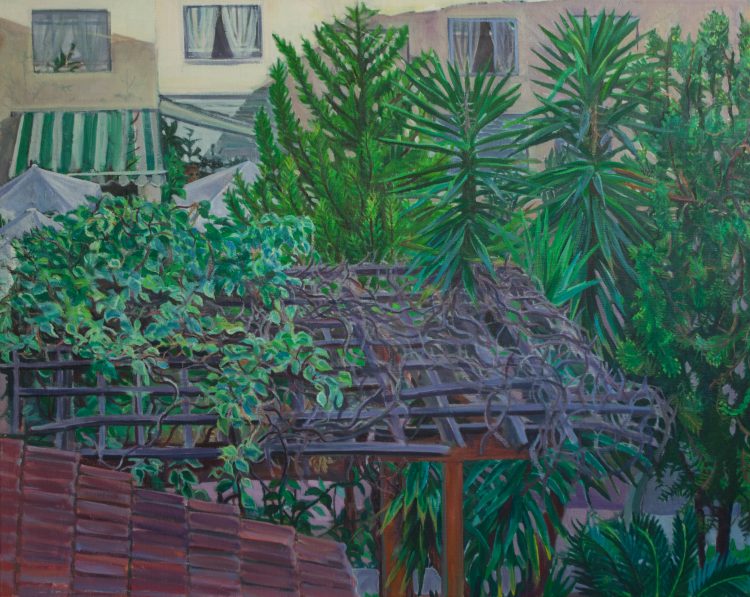Landscapes with out horizon
10 – 20 November, 2015
Landscapes are a genre of painting which can be very quickly perceived and one which makes us travel to places as seen through the eyes of artist. Specifically, the latter is the traveler, and we are simple by standers who attach our own experience to him. Landscapes are not to be simply contemplated. They can, and do, illustrate the history of certain places which we would hardly ever choose to visit.
Shpëtim Kërçova’s painting series is a narrowly focused journey in terms of space but so spread out in time that the shadows of the objects and subjects guide us through different seasons. The selection of landscape art does not send the author (as it would be traditionally assumed) on a journey in search of far-off places because he has chosen to explore, for more than 2 years,a green urban micro-space very close to his daily life.
Kërçova’s paintings convey a sense of claustrophobia which generally characterizes our public spaces. We cohabitate with fabricated urban landscapes, constructed by man in order to create “green scenery” amongst buildings, and we see how quickly the vegetation thrives by creating a life of its own.
Initially considering the grass as a fixed “set” which periodically fills up with people, objects and events, the author tries to reproduce the information on the other side of the window by “compressing” within the canvas such details as time of day and by using different lights.
The given space never loses its dimension within these paintings. Even when not necessarily emphasized, its details show up somewhere in a corner of the composition. Its light illustrates its character, restricted and isolated,whereas the subject illustrates its potential of producing chaos and becoming grotesque. The significant amount of time which the author has dedicated to this series has made it develop significantly in terms of substance. Kërçova has recently added images of his reflections to the given space, thus starting an entirely new conversation.
The dynamic graphical nature and color intensity of each composition is what ties all the paintings of different formats in the series. They faithfully reflect the landscape which appears to the author from different viewpoints, like “Among the vegetation” or “Children try to escape.” They finally earn a sort of balance between their objects and subjects as in “Landscape with unfinished people” and “Something went wrong”.
They are stripped of details in order to tell a story like in “The couple”, and they make room for “foreign” subjects like in “Untitled” which, rather than the landscape on the other side of the window,shows the abstract landscape from the mind of the author.
Over this urban micro-space, so close to his daily reality, Kërçova has piled on many layers which simultaneously cover and reveal it. In addition to the sense of density which underpins these paintings, the “Landscapes with no horizon” author also paints time.
Alketa Kurrizo, 2015


